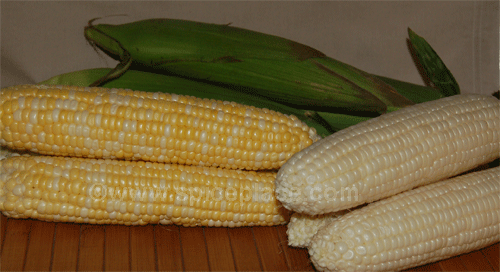spiceplace
Administrator

Corn - that tall hard-to-grow-in-many-different-types-of-soil plant that has large ears holding many kernels (seeds) that we enjoy chomping on!!
Also known as maize, corn is a cereal grass related to wheat, rice, oats, and barley.
Mexican Indians, 10,000 years ago would gather corn from wild plants as a food source. It only took them 5,000 years to learn to grow it themselves. What they grew was multi-colored corn - known as Indian corn.
Although used for livestock and in industrial products such as ceramics, explosives, construction materials, metal molds, paints, paper goods, textiles, industrial alcohols, and ethanol - corn is still a number one as a food source for people and food products for people, making it our #1 food crop. Each corn kernel contains four major components: starch, protein, oil, and fiber. These kernel components are processed to create thousands of different products for all sorts of uses.
Corn is a major component in many food items like cereals, peanut butter, snack foods and soft drinks and Baby Food Baking Products Beer & Ale Canned Vegetables Chewing Gum Confectionery Powdered Sugar Pancake & Waffle Mixes Flours Mustard Puddings and Custards Salad Dressing Soups Pet Foods Sauces & Gravies - all made from the starch of the corn kernels.
Late corn is coming out soon in many areas - and the corn fields will be turned into corn mazes for Halloween and the dried corn stalks will be used to decorate for the fall of the year.
As for me, I simply love freshly picked and steamed corn on the cob, with a little butter of course.